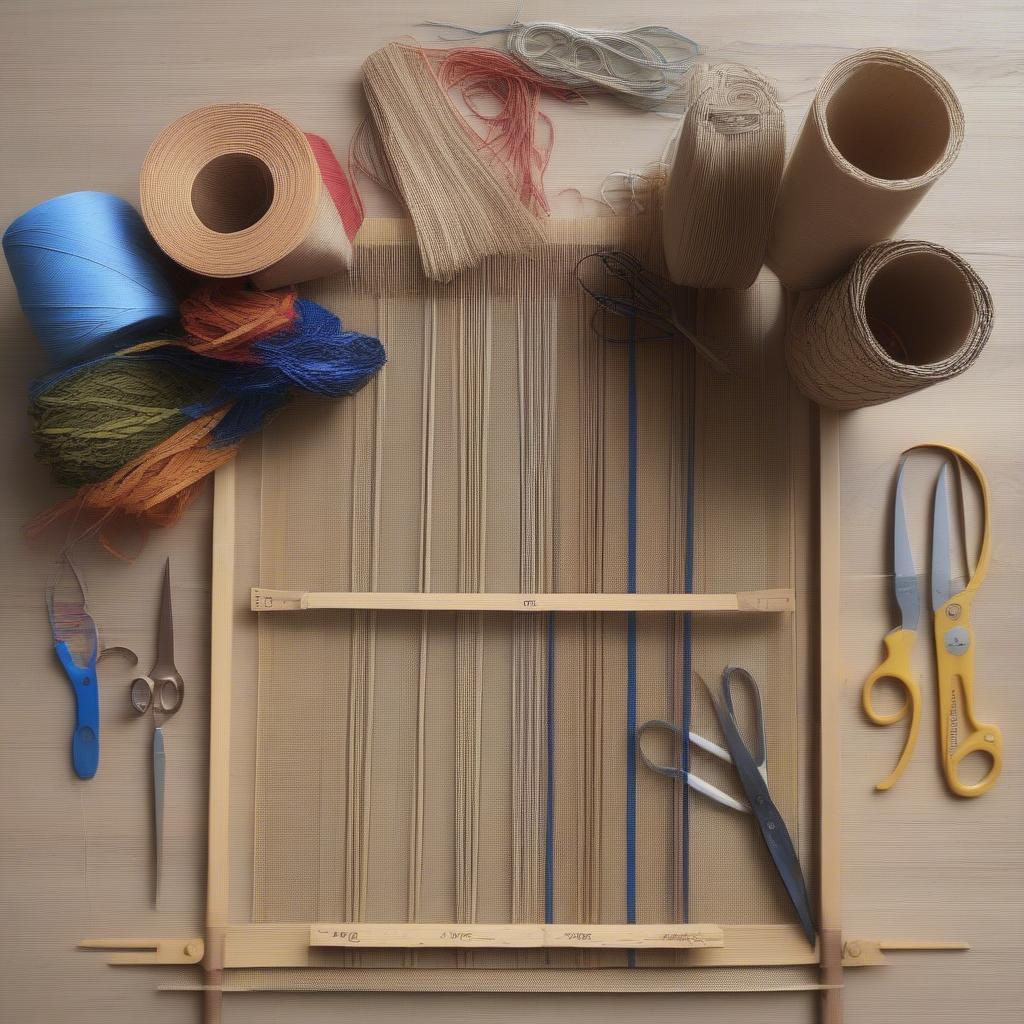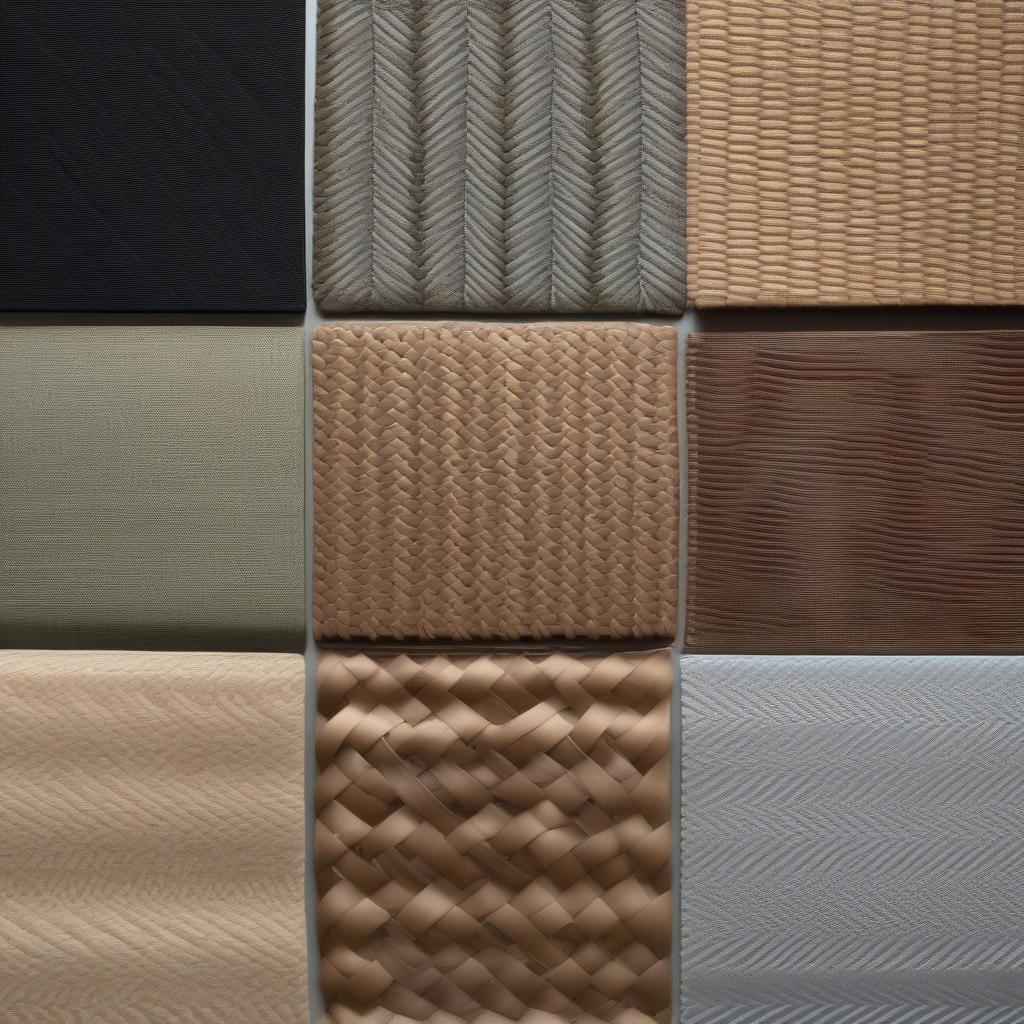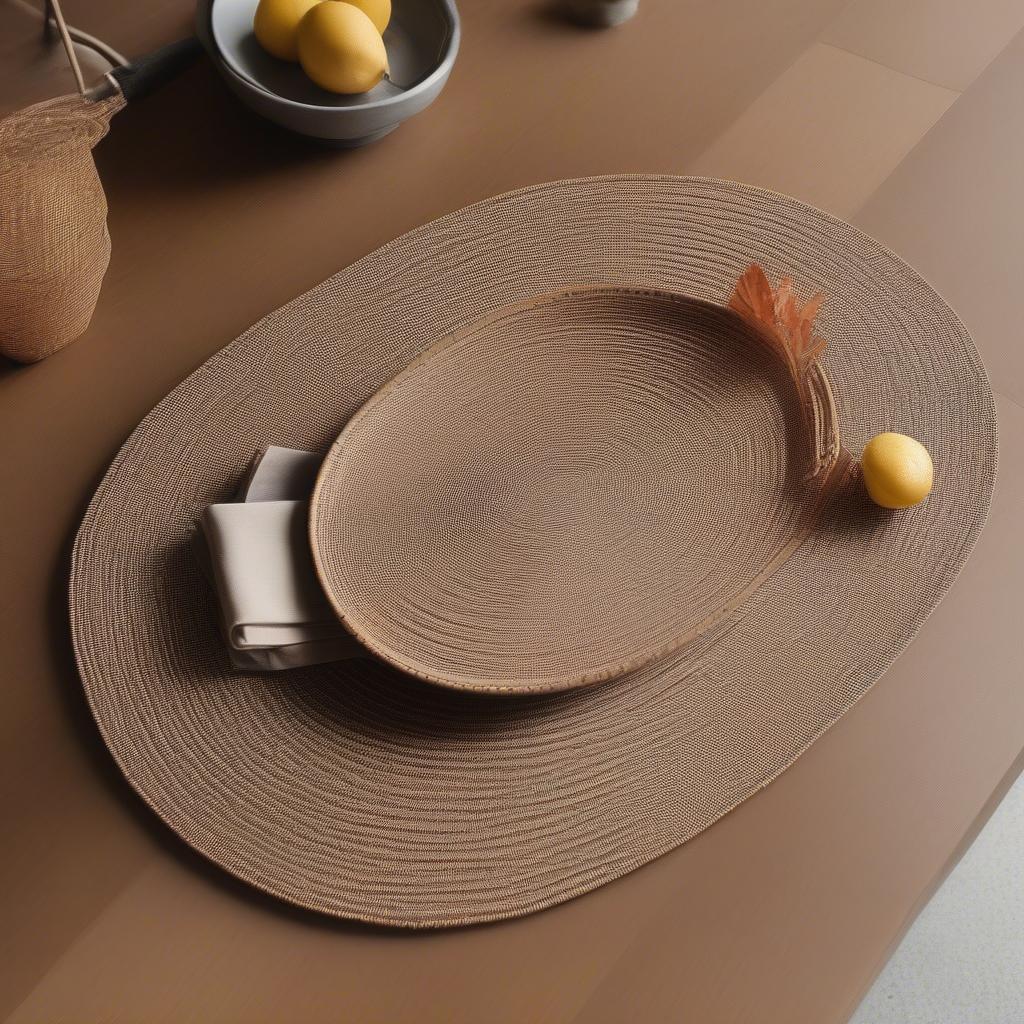Weave Table
How to Weave a Table Mat: A Comprehensive Guide
Learning How To Weave A Table Mat adds a touch of personalized elegance to your dining experience. Whether you’re a seasoned crafter or just starting out, this guide will equip you with the knowledge and techniques to create beautiful, functional table mats.
Getting Started with Table Mat Weaving
Weaving your own table mats allows you to choose materials, colors, and patterns that perfectly complement your home decor. Before diving into the weaving process, you’ll need to gather a few essential supplies.
Essential Supplies for Weaving
- Weaving Material: Consider natural fibers like raffia, seagrass, or even recycled fabric strips. For a more durable mat, explore options like pvc basket weave table runner and placemat set.
- Loom: A simple cardboard loom is perfect for beginners. More experienced weavers might prefer a rigid heddle loom or even a backstrap loom.
- Scissors: Sharp scissors are essential for trimming the weaving material.
- Ruler or Measuring Tape: Accurate measurements ensure a consistent and symmetrical table mat.
- Needle (Optional): A needle can be helpful for weaving in loose ends or adding decorative elements.
 Essential Supplies for Table Mat Weaving
Essential Supplies for Table Mat Weaving
Step-by-Step Guide to Weaving a Table Mat
Follow these steps to create your own woven masterpiece:
- Warping the Loom: Create the foundation of your table mat by wrapping the weaving material vertically around the loom. Ensure even tension for a uniform weave.
- Starting the Weft: Begin weaving the weft (horizontal threads) over and under the warp threads. Experiment with different weaving patterns, from simple over-under to more intricate designs.
- Building the Mat: Continue weaving, pushing down each row firmly to create a tight and compact mat.
- Securing the Ends: Once you’ve reached the desired length, secure the ends of the weaving material by weaving them back into the mat or tying them off neatly.
Exploring Different Weaving Patterns
Beyond the basic over-under weave, explore other patterns like the twill weave, basket weave, or herringbone weave to add visual interest and texture to your table mats. You could even incorporate colors and textures reminiscent of the yellow weaves table mats.
 Exploring Different Weaving Patterns for Table Mats
Exploring Different Weaving Patterns for Table Mats
Choosing the Right Materials
The material you choose will significantly impact the final look and feel of your table mat. Natural fibers offer an organic and rustic aesthetic, while synthetic materials can be more durable and easier to clean.
Natural vs. Synthetic Materials
- Natural Fibers: Raffia, seagrass, jute, and cotton provide a natural and eco-friendly option. These materials often have a unique texture and can add a touch of rustic charm to your table setting.
- Synthetic Fibers: Materials like polypropylene or nylon offer increased durability and are often water-resistant, making them ideal for everyday use. For inspiration on synthetic options, check out the table cover waterproof fabric waffle weave eggplant.
“Choosing the right material is crucial for the longevity and aesthetic of your table mats,” says renowned weaving expert, Amelia Crafton. “Consider the environment the mats will be used in and choose materials that can withstand everyday wear and tear.”
Conclusion: Weaving Your Way to a Stylish Table
Learning how to weave a table mat is a rewarding and creative endeavor. By following these simple steps and experimenting with different materials and patterns, you can create beautiful and functional table mats that add a personal touch to your dining experience. For those interested in other woven products, you can also find information on the weaver motorcycle lift table and matt weaver chefs table.
 A Finished Woven Table Mat
A Finished Woven Table Mat
FAQ
- What is the easiest material to weave a table mat with?
- Can I use recycled materials for weaving table mats?
- How do I prevent the edges of my table mat from fraying?
- What is the best type of loom for a beginner?
- How do I clean a woven table mat?
- What are some common weaving mistakes to avoid?
- Where can I find more advanced weaving patterns?
Need help with your weaving project? Contact our 24/7 customer service at +84 388 951 999, Hanoi, Vietnam or Tech Avenue, Suite 12, San Francisco, CA 94105, USA.
